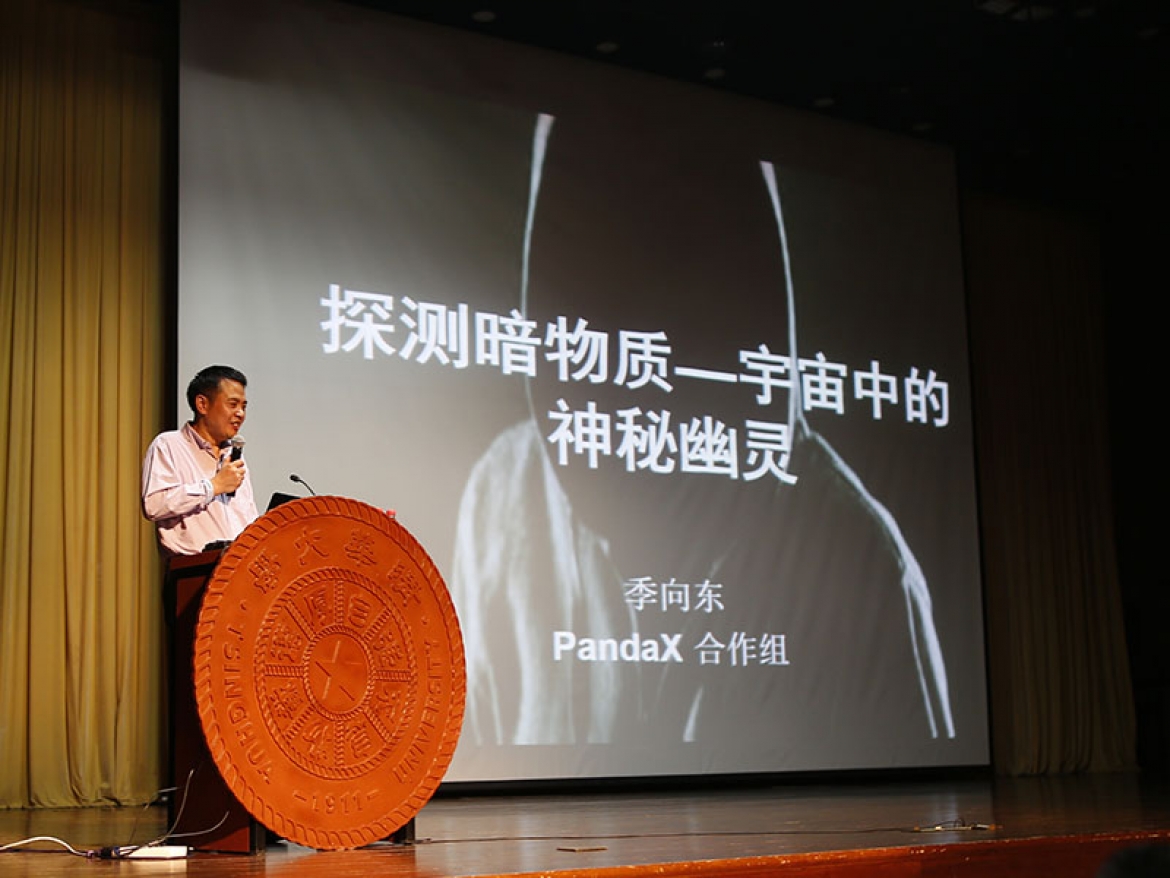Dark Matter - The Mysterious Ghost in The Universe
On the evening of September 24th, 2016, the 14th lecture of Tsinghua Astrophysics Public Series (TAPS): New Worlds, New Horizons was held at the Auditorium. The speaker, Professor Xiangdong Ji is the director of Institute of Nuclear, Particle, Astronomy and Cosmology (INPAC) at Shanghai Jiao Tong University (STJU), and is the project leader for the PandaX experiment located in the China Jin-Ping underground Laboratory (CJPL). Approximately 1,000 students, faculties and off-campus audience attended the lecture.
Professor Ji first gave an introduction to dark matter, focusing on the evidence of its existence and the history of its discoveries. Numerous observations indicate that a considerable amount of matter in the universe is dark and its origin remains unknown, yet its existence is inferred by its gravitational interaction with normal matter. A number of speculations have already been proposed, the most popular among which is the Weakly Interacting Massive Particles (WIMPs). According to current theories, three different approaches could lead to its final discovery: experiments on particle colliders, direct detection and indirect detection. Experiments conducted at the CJPL currently utilizing the direct detection method, a process in which the information of dark matter particles is gathered by analyzing their collisions with nuclei.
The CJPL, located 2400-meter underground at the Jin-Ping Tunnel in Sichuan Province and constructed jointly by Tsinghua University and Ertan Hydropower Company, is the deepest underground facilities in the world and offers an excellent location for dark matter particle searching around the world. Currently, two projects to detect dark matter particles, CDEX and PandaX are conducting their experiments there. Professor Ji continued his lecture by introducing the project, its underlying theory and current progress. Liquid Xenon is employed as the target for collision events. Phase I (125-kg Xenon) has already completed in 2014 as an initial test and Phase II (500-kg Xenon) has finished; its final results have been published earlier this year. Although no detection has been recorded, it still provides the most stringent constraints on the mass of dark matter candidates and its collision cross-sections.

Prof. Ji concluded his lecture by looking into the future of dark matter detection. He believes that advances in detection accuracy in the next decade would render it possible to shed light on the composition of dark matter. Furthermore, Professor Ji expressed optimisms that the searching teams in China will be among the major contributors of this exciting discovery.
In the Q&A session, the audience asked a wide range of questions from the details of detection techniques to fluctuations in the cosmic microwave background (CMB), further enriching the experience of the lecture and indicating a prosperous future for the detection of dark matter.

The nature of dark matter, one of the ultimate challenges of modern physics, will only be revealed by the collaborative efforts of scientists, and, as Prof. Ji said, more talented students are welcome to join the efforts to unlock the mystery of dark matter.



